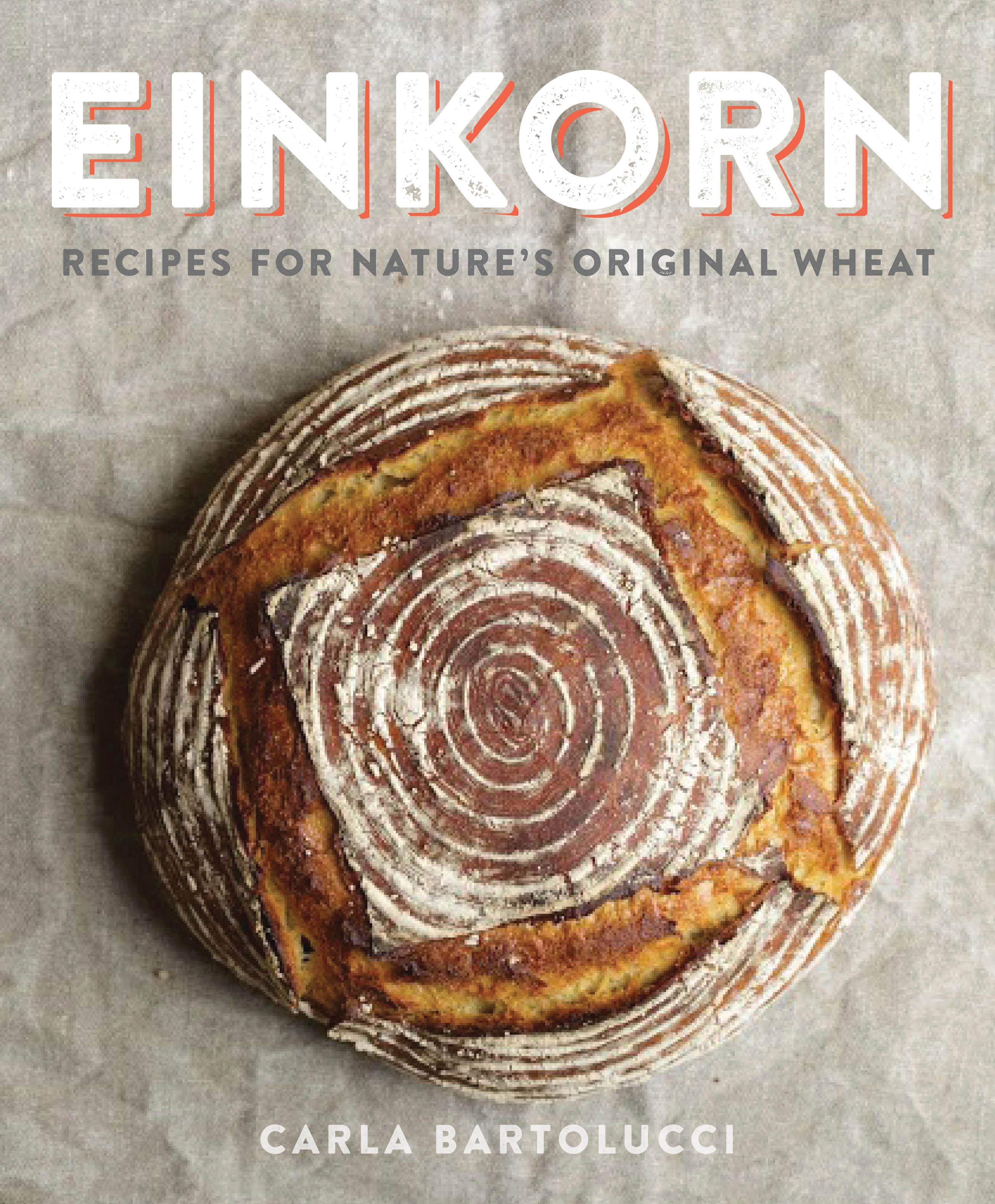










Gluten-free eaters, rejoice! Carla Bartolucci’s Einkorn provides recipes utilizing this ancient grain to make breads, pastas and doughs.
Bagels made with einkorn flour are absolutely delicious. If you have never made homemade bagels, you might not realize how many phases the dough goes through. It is mixed, proofed, and shaped and then boiled in water and baking soda before its final baking. When the bagels hit the boiling water, the starches in the flour gelatinize and form a thick crust, while the baking soda helps them brown up in the oven. Once the crust is set, the dough won’t rise as much as a regular loaf of bread, creating that dense chewiness inside that bagel lovers crave.
Directions
- Make the Yeast Levain: In a medium bowl, mix a small pinch of yeast and water together until the yeast dissolves. Mix in the flour until combined. Cover and let stand at room temperature for 6 to 8 hours. The levain is ready to use when the surface of the mixture is covered with large bubbles. Just before mixing your dough on the day of baking, mix in the remaining 1⁄4 teaspoon of yeast to ensure that your bread rises properly. This additional yeast will not be listed in the recipe, so don’t forget this last step.
- In a medium bowl, mix together the levain, water, and maple syrup until creamy. In a large bowl, combine the flour and salt. Add the liquid mixture to the flour and mix with a stiff spatula as much as you can. Squeeze the dough in your hands until the dough holds together. Turn out on a clean work surface and knead by hand briefly until the dough just gets sticky. Return to the bowl and cover tightly with plastic wrap. Let proof for 2 to 3 hours.
- Transfer the dough to a clean work surface. Divide the dough into 10 equal pieces and create tight rounds by rolling each piece with pressure in a circular motion to form a ball. To form the bagels, roll each ball into a tight 6-inch rope. Loop the dough to form a circle. Press one end over the other to seal. Brush a baking sheet with olive oil. Place the shaped bagels on the sheet, then cover with plastic wrap lightly brushed with oil and let rest for 45 minutes. Line a baking sheet with parchment paper and place in the oven. Preheat the oven to 500°F.
- B ring 2 quarts of water to a rolling boil. Lower the heat so the water is barely boiling, then add the baking soda. It will foam up and subside, then increase the heat to maintain a boil. Test a bagel by dropping it in the boiling water; it should float up to the surface pretty quickly. If not, place back on the tray and proof the bagels for 30 minutes.
- Cook 3 bagels at a time for 45 seconds until the bagels expand and turn dark yellow, flipping after 20 seconds. Lift up the bagels with a slotted spoon and transfer to a cooling rack. If you wish to add seeds or spices to the bagels, let the bagels rest for 2 minutes, then pick up each bagel with your hands and press the topside into the toppings.
- Remove the hot baking sheet from the oven and line it with a new piece of parchment paper. Position the bagels 1 inch apart on the sheet.
- Bake the bagels for 13 minutes until golden brown. Transfer the bagels to a wire rack to cool for 15 minutes before serving. Store in a sealed plastic bag for up to 3 days, or freeze for up to 1 month.
Reprinted from Einkorn. Copyright © 2015 by Carla Bartolucci. Photographs © 2015 by Clay McLachlan. Published by Clarkson Potter/Publishers, an imprint of Penguin Random House LLC.
